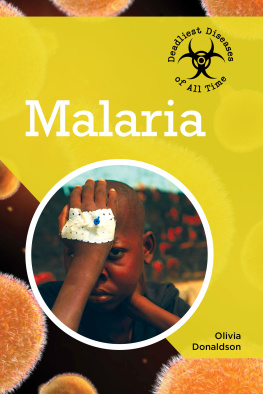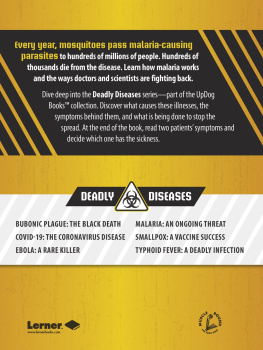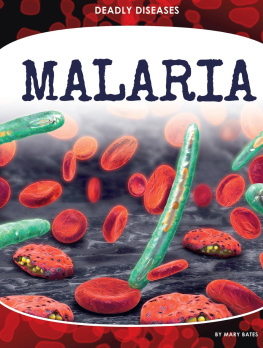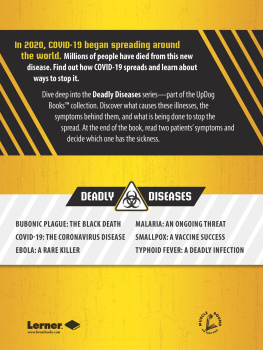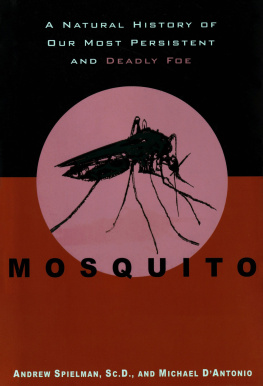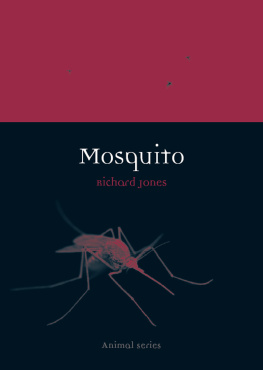Published in 2015 by Cavendish Square Publishing, LLC
243 5th Avenue, Suite 136, New York, NY 10016
Copyright 2015 by Cavendish Square Publishing, LLC
First Edition
No part of this publication may be reproduced, stored in a retrieval system, or transmitted in any form or by any meanselectronic, mechanical, photocopying, recording, or otherwisewithout the prior permission of the copyright owner. Request for permission should be addressed to Permissions, Cavendish Square Publishing, 243 5th Avenue,
Suite 136, New York, NY 10016. Tel (877) 980-4450; fax (877) 980-4454.
Website: cavendishsq.com
This publication represents the opinions and views of the author based on his or her personal experience, knowledge, and research. The information in this book serves as a general guide only. The author and publisher have used their best efforts in preparing this book and disclaim liability rising directly or indirectly from the use and application of this book.
CPSIA Compliance Information: Batch #WW15CSQ
All websites were available and accurate when this book was sent to press.
Library of Congress Cataloging-in-Publication Data
Donaldson, Olivia, author.
Malaria / Olivia Donaldson.
pages cm. (Deadliest diseases of all time)
Includes index.
ISBN 978-1-50260-095-0 (hardcover) ISBN 978-1-50260-097-4 (ebook)
1. MalariaJuvenile literature. 2. MalariaHistoryJuvenile literature. I. Title.
RC156.D66 2015 616.9362009dc23
2014031013
Editor: Kristen Susienka
Senior Copy Editor: Wendy A. Reynolds Art
Director: Jeffrey Talbot
Senior Designer: Amy Greenan
Senior Production Manager: Jennifer Ryder-Talbot
Production Editor: David McNamara
Photo Researcher: J8 Media
The photographs in this book are used by permission and through the courtesy of: Cover photo and page 1, Stocktrek Images/Getty Images; Cover photo and page 1, isifa/Getty Images; Paula Bronstein/Getty Images, 4; STRDEL/AFP/ Getty Images, 7; Navy Medicine/File:09-5036-043 influenza (7839561772).jpg/Wikimedia Commons, 8; Ned M. Seidler/National Geographic/Getty Images, 10; DEA/G. DAGLI ORTI/De Agostini/Getty Images, 14; AFP/Getty Images, 16; traveler1116/E+/Getty Images, 16; North Wind Picture Archives, 18; Klockrike/File:RUBIACEAE Cinchona pubescens.jpg/Wikimedia Commons, 23; Henry Guttmann/Hulton Archive/Getty Images, 24; Kucher Serhii/Shutterstock.com, 27; AWL Images/Getty Images, 31; Stocktrek Images/Getty Images, 32; Jim Gathany/Centers for Disease Control and Preventions Public Health Image Library/File:Anopheles stephensi.jpeg/Wikimedia Commons, 36; estivillml/iStock/Thinkstock, 39; David Evans/National Geographic/Getty Images, 42; Majority World/Universal Images Group/UIG via Getty Images, 45; Justin Sullivan/Getty Images, 50; BSIP/Universal Images Group/UIG via Getty Images, 53; rob eyers/iStock/Thinkstock, 55; Paula Bronstein/Getty Images, 56.
Printed in the United States of America


Every minute, a child dies from malaria.
I t starts like a cold or the flu, as sufferers come down with a high fever, chills, diarrhea, and vomiting. Sometimes people feel muscle pain as well. The symptoms may go away for a bit, but then come back. In the worst cases, it does damage to the liver, kidneys, lungs, or even the brain. If the correct diagnosis and treatment is not provided, it can kill its victims. Malaria is one of the planets deadliest diseases, and it has caused human suffering for thousands of years.
The number of malaria sufferers in recent years is staggering. In 2012, more than 200 million people came down with malaria, and more than 600,000 died from the disease. While the numbers are huge, they actually represent a positive trend, since the number of people who have died from malaria decreased 42 percent globally from 2000 to 2012. Even more important is that malaria mortality decreased 49 percent in Africa, the part of the world most affected by this deadly disease. Even with these decreases, a child dies every minute from malaria, and Africa is the region where 91 percent of the worlds malaria deaths happen. The disease is also prevalent in Central and South America, and Asia.
In a time when many vicious diseases are being conquered, malaria still plagues the globe. After years of seeing increases in the number of malaria cases, the total peaked in 2003, with 232 million cases. One year later, more than 1.2 million people died from malaria. Researchers set the decade of the 2000s as the Decade to Roll Back Malaria. Many global organizations pledged to help combat the disease, and raise awareness of how to prevent it. Research continues in methods to reduce new cases, but officials say that even today, half the worlds population is at risk of getting malaria. Medical officials are still looking for an effective vaccine against the disease, although many attempts have been made. Likewise, while other treatment options exist, newer resistant strains of the parasite that causes the disease have emerged in the past few decades, making the researchers work even more challenging.
As the medical community continues to search for effective vaccines and treatments, as well as the best way to reduce the population of disease-carrying mosquitoes, people all around the world look to help the countries where malaria is still a top health concern. While people are unlikely to get malaria in the United States, citizens who travel globally, particularly to high-risk regions, can contract the disease if they dont take specific preventative measures. If people exposed to malaria do not get the proper treatment, the disease can prove fatal.

Although malaria is rare in the United States, people who travel to countries where the illness is prevalent have a higher risk of contracting malaria.
Malaria has a long and complicated history. It took centuries for scientists to discover what caused the disease. Its earliest treatment options came ironically from a land that was ravaged by the disease when foreign conquerors brought the illness with them to a previously uninfected population. Even today, scientists are proposing some innovative and downright bizarre treatment options. To understand these efforts, you must first understand what malaria is, and how you can get it.

Many deadly diseases have affected humanity, such asinfluenza. Here, U.S. Navy members prepare to attend to patients suffering from the illness in 1918..
O ne of the great threats to the human population is the emergence of a new or previously unidentified disease. Often, their attacks can devastate a population when people have no previous

